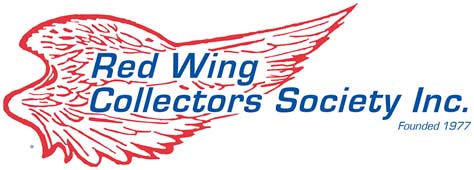I would like more information on the Redwing pattern "Leaf Magic". Who or where should I contact. Thank you. Lana
Answer:
Lana, the only piece made with the Leaf Magic design is the dinner plate. It was made to go with pieces from the Quartette pattern.
Quartette first appears in a January 1951 price list. This documention does not mention Leaf Magic, so apparently it was introduced after the initial production of Quartette. Quartette consists of Concord shaped pieces in four solid colors — Ming Green, Chartreuse, Copper Glow and Mulberry. All pieces, including covers for the casseroles, teapots, sugar bowls, etc, are solid colored. The buyer could purchase a set in any one color or could mix & match colors as desired.
Leaf Magic plates are first mentioned in a July 1951 document, six months after the introduction of Quartette. A January 1952 Red Wing price list describes Leaf Magic this way: "The decoration of this plate has 3 leaves with the color on one-half of each leaf in Chartreuse and the other one-half of leaf is painted one of the remaining Quartette colors, i.e. Ming Green, Copper Glow or Mulberry, with white overglaze. For additional pieces to make up the service Quartette is used." In other words, Leaf Magic was a more colorful dinner plate that could be substituted for the standard solid colored dinner plates when purchasing a set of Quartette dinnerware.
Larry
